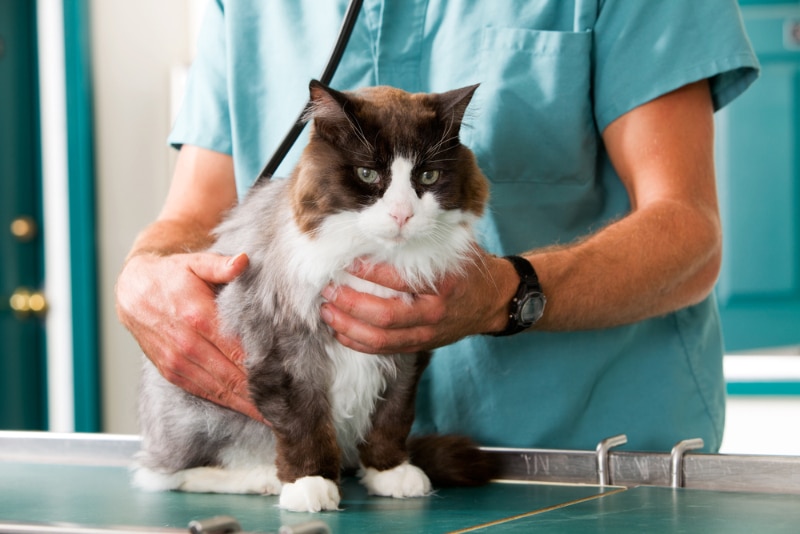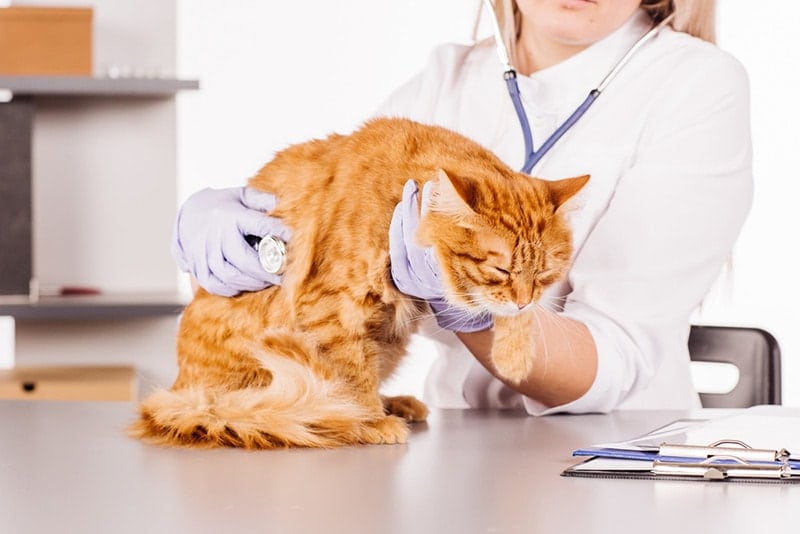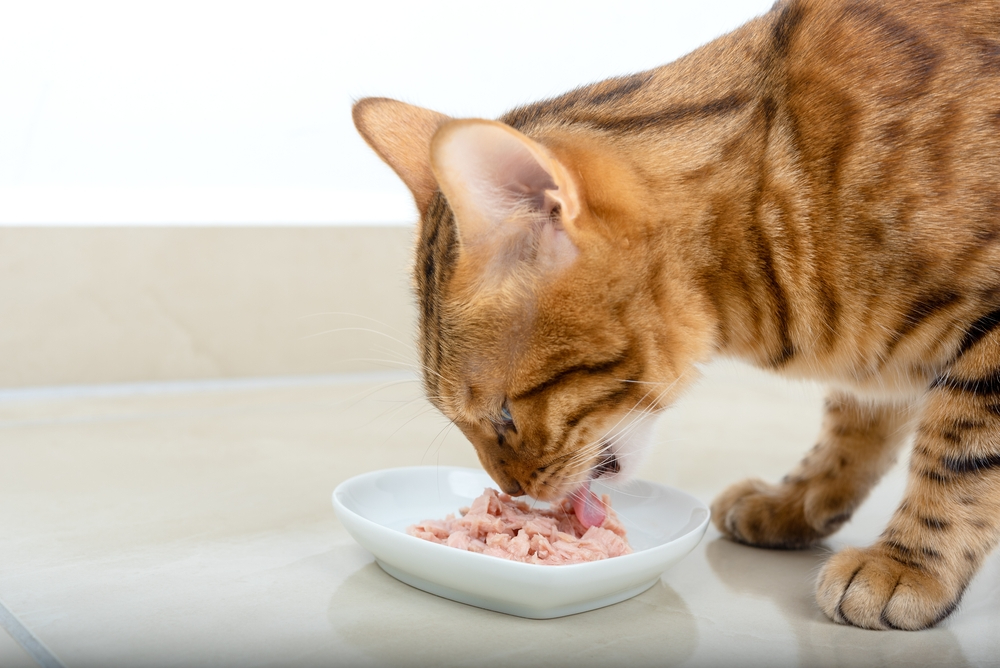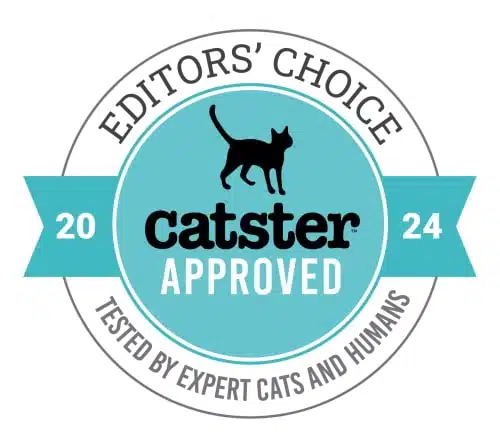Click to Skip Ahead
You know that you’ll have to make a difficult decision when you find out that your beloved pet is reaching the end of their life. Unfortunately, mammary cancer is one of the most aggressive forms of cancer in cats, and it can take an emotional toll on both you and your pet. To make an informed decision about euthanasia, you should understand the signs and progression of this disease.
What Is Mammary Cancer?
There are different types of mammary cancer that can affect cats but the most common is mammary carcinoma. This tumor forms firm swellings or nodules in the mammary glands of cats. It is most commonly seen in older female cats that have not been spayed. Unfortunately, this cancer often spreads to other mammary glands, lymph nodes, and the lungs.

Prognosis
If mammary tumors are caught early and surgically removed before they have spread, the treatment is much more likely to be successful, and the prognosis is better. Vets will usually do further diagnostic tests, such as X-rays and ultrasound, to assess how far the cancer has progressed and to be able to give a better idea of the prognosis. Sometimes, chemotherapy will also be offered.
Signs It Might Be Time to Euthanize a Cat With Mammary Cancer
Unfortunately, cat mammary cancer is an aggressive cancer, and treatment is not always successful. Even after surgical excision, the cancer can either recur within the mammary glands or have already spread elsewhere in the body. Deciding when to euthanize your pet can be an emotional and difficult process, but it may be necessary for humane reasons if their quality of life is significantly compromised.

How Will I Know When It Is Time to Euthanize My Pet?
Your veterinarian will be able to assess your pet’s condition and advise on whether euthanasia is the best course of action. Ultimately, the decision is up to you as the owner, but it can be helpful to consider factors such as quality of life and pain levels.
Signs that it may be time to discuss your cat’s quality of life with your vet include:
- Your cat has lost their appetite.
- They have significant weight loss.
- They are weak and lethargic and have trouble moving around.
- They are not taking an interest in things they normally enjoy.
- They are having difficulty breathing.
- The tumors in their mammary glands are ulcerated and open.
What Is the Process of Euthanasia Like?
Your veterinarian may provide your pet with a sedative to keep them calm if they are nervous or agitated, and then an injection is given that is designed to quickly and peacefully end their life. The injection is an overdose of an anesthetic, and your cat will quickly lose consciousness and won’t feel pain. Death occurs within a few minutes when the heart stops beating.
How Can I Cope With the Loss of My Pet?
Losing a beloved pet can be emotionally devastating, especially if they have been living with a terminal illness. It is important to remember that you are not alone and that there are resources available to help you through this difficult time. Talking to your veterinarian or friends and family members who have had experience with pet loss can be very helpful. You may also find comfort in joining a local pet loss support group or talking to a counselor who specializes in grief and bereavement counseling.

Are There Any Resources to Help Me Through This Process?
Yes, there are a number of great resources available to assist you in coping with pet loss and the decision to euthanize your pet. Your local veterinarian or animal hospital can provide advice and support, and there are many online support groups and websites dedicated to pet loss.
 Choices for Honoring the Remains of Your Pet
Choices for Honoring the Remains of Your Pet
Once your pet has passed away, you may find solace in honoring their memory. There are a number of options available for this, such as burial or cremation. Burial can be done on your property if allowed by local laws or at a pet cemetery. Cremation is another option, and the ashes can then be scattered in the place of your choosing or kept as a memento.

Special Ways to Remember Your Cat
No matter how you choose to honor the remains of your pet, there are also special ways that you can remember them. You may want to consider writing down your favorite memories or creating a photo album of your time together. You could even plant a memorial tree or create an online memorial where friends and family can share their own stories and fond memories.
Facing the Loss of Your Pet
The loss of a beloved pet can be devastating, but it is important to remember that you have done all that you can for them. Taking care of your emotional well-being during this difficult time will help ensure that you can cope with the grief in a healthy manner. It is okay to take some time for yourself and lean into support from family and friends if needed. Remembering the happy memories of your pet and honoring their memory are powerful ways to move forward and begin healing.
Conclusion
Making the decision to euthanize a beloved pet due to mammary cancer is never easy. However, understanding the signs, diagnosis, and prognosis can help you make an informed and compassionate decision. Be sure to consult with your veterinarian on any questions or concerns you may have about the condition of your pet and whether euthanasia might ultimately be best for your cat.
Featured Image Credit: PRESSLAB, Shutterstock












